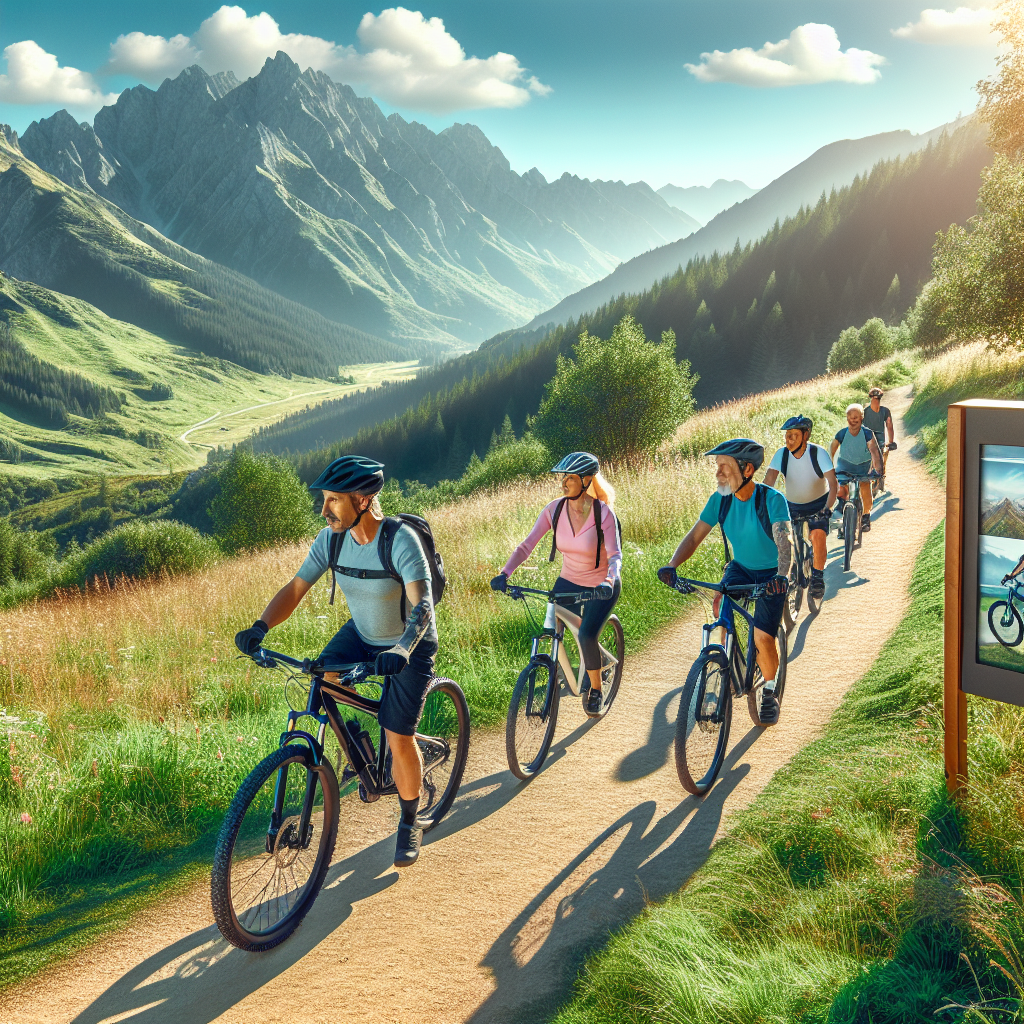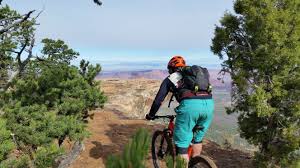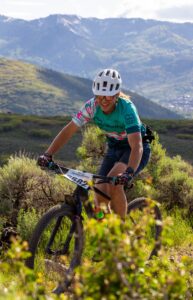
Choosing the Right Trail: Start Your Adventure Here
Embarking on a mountain biking adventure is exhilarating, and with the right trail, it can be a delightful experience, especially for seniors. The key is to find trails that match your skill level and offer a comfortable ride. Whether you’re looking for a gentle slope to cruise down or a scenic path that’s easy on the joints, the perfect trail is out there waiting for you.
Remember, the goal is to enjoy the journey, not just the destination. So, let’s focus on finding those trails that promise a balance of safety and enjoyment. With the right preparation and knowledge, you’ll be spinning your wheels on a fantastic path in no time!
Key Takeaways
- Choose trails that align with your experience and comfort level for a safe and enjoyable ride.
- Understand the trail rating system to select paths that are appropriate for your skill set.
- Proper gear is essential for safety – invest in quality equipment before hitting the trails.
- A thorough bike check is crucial to prevent any mechanical issues during your ride.
- Exploring mountain biking trails can be a fun and healthy activity for seniors with the right approach.

Identifying Safe Trails for Seniors
When it comes to mountain biking, safety is paramount, especially for seniors. The ideal trails are those that offer a smooth ride, minimal obstacles, and clear signage. Look for paths that are well-maintained and have a reputation for being senior-friendly. Accessibility is also a key factor – trails that are easy to get to and have nearby facilities make the outing more convenient and stress-free.
It’s not just about the trail itself, but also the environment around it. Trails with plenty of shade, benches for resting, and beautiful vistas can enhance the experience, making your ride both refreshing and invigorating.
Trail Ratings Explained: What Seniors Should Look for
The International Mountain Bike Association (IMBA) has developed a trail rating system to help riders understand the difficulty of a trail. As a senior, you’ll want to stick to trails rated as ‘Green Circle’ or ‘Blue Square’ which are designed for beginners to intermediate riders. These trails are less technical, have fewer obstacles, and offer a more leisurely riding experience.
Here’s what to keep in mind:
Green Circle: These trails are smooth and wide, perfect for getting comfortable with your bike and the terrain. They’re the mountain biking equivalent of a leisurely walk in the park. Blue Square: Expect slightly more challenge with gentle inclines and manageable obstacles. These trails offer a bit more excitement but remain approachable for those with some experience.
Avoid trails rated ‘Black Diamond’ or ‘Double Black Diamond’ as they are designed for expert riders with steep inclines, challenging terrain, and potential hazards. Always prioritize safety and enjoyment over the thrill of conquering tough trails.
Pre-Ride Preparations for a Safe Journey
Before you set out on your mountain biking adventure, it’s crucial to prepare. This doesn’t just mean plotting your route; it also involves ensuring you and your bike are in top condition. A little time spent on preparations can save you a lot of trouble down the trail.
Think of it as setting the stage for a grand performance – everything needs to be just right. So, let’s get you ready to hit those trails with confidence and peace of mind!
Must-Have Safety Gear
Your safety gear is your first line of defense against the unexpected. Don’t skimp on quality here – it’s worth every penny. At the very least, your gear list should include a sturdy helmet, gloves for grip, and padding for your knees and elbows. These essentials will help protect you from falls and scrapes.
Also, consider wearing bright colors or reflective materials to ensure you’re visible to others on the trail. It’s a simple step that can make a big difference in your safety.
Pre-Ride Bike Check
Just like a pilot performs a pre-flight check, you should give your bike a thorough inspection before each ride. Check the tire pressure, brakes, and gears to ensure everything is working smoothly. Make sure all bolts are tight and that your handlebars and seat are secure.
A well-maintained bike not only provides a safer ride but also makes the experience more enjoyable. After all, you want to focus on the beauty of the trail, not a squeaky chain or a wobbly wheel.
With these preparations in place, you’re almost ready to start your adventure. Just remember, the best ride is a safe ride. So gear up, check your bike, and choose the right trail. It’s time to explore with confidence!
Understanding Your Specialized Roll Elite Bike
The Specialized Roll Elite is a trusty steed for any senior looking to hit the trails. It’s designed with comfort and stability in mind, featuring an upright riding position that’s easy on the back and joints. The wide tires provide excellent traction on various surfaces, and the low-entry design makes mounting and dismounting a breeze.

Before you ride, familiarize yourself with the bike’s features. Adjust the saddle to the right height, so your legs have a slight bend when extended. Learn how the gears work to make pedaling easier when you approach a hill. And most importantly, ensure the brakes are responsive for those times you need to slow down quickly.
Smooth Sailing: Top Trails for Seniors
Now that you’re acquainted with your bike and geared up for safety, it’s time to discover some of the best trails for senior riders. These trails are known for their gentle grades, beautiful scenery, and senior-friendly amenities.
1. Gentle Climbs and Scenic Routes
Trails with gentle climbs are perfect for seniors who want to enjoy mountain biking without the strain of steep hills. These routes often wind through picturesque landscapes, offering plenty of opportunities to stop and soak in the views. Look for trails that meander through forests, around lakes, or along rivers for a serene biking experience.
2. Accessible Trails with Rest Stops
Accessibility is key for a stress-free outing. Trails with rest stops provide places to take a break, hydrate, and maybe even enjoy a picnic. These trails are often paved or well-compacted, making them ideal for riders who prefer a smooth surface. They’re also typically close to amenities, ensuring help is at hand if needed.
3. Loop Trails with Emergency Access Points
Loop trails are fantastic for seniors because they offer a defined start and end point, which can be comforting for those worried about getting lost. Emergency access points along these trails add an extra layer of safety, ensuring that help is never too far away. These trails are often well-marked and frequented by other riders, providing a sense of security and community.
Boosting Your Skills: Tips for Navigating Trails Safely
Improving your mountain biking skills not only makes your rides more enjoyable but also safer. Here are some tips to help you navigate trails with confidence.
Ride Within Your Limits
It’s important to be honest about your skill level and physical condition. If you’re just starting out or returning to biking after a break, choose trails that are less challenging and work your way up. Riding within your limits reduces the risk of accidents and increases your enjoyment of the sport.
Listen to your body, and if a trail feels too difficult, it’s okay to turn back. There’s no shame in playing it safe – the trails will always be there for another day.
Mastering Trail Obstacles
As you gain confidence on your bike, you’ll start to encounter various obstacles on the trail. These can include roots, rocks, and small dips. The key to mastering these challenges is to approach them with control and composure. Shift your weight slightly back when going over bumps to avoid going over the handlebars, and use your legs as natural shock absorbers.
Practice makes perfect, so start with smaller obstacles and gradually work your way up as you become more comfortable. And remember, there’s no harm in getting off your bike and walking past something you’re not ready to ride over. Safety always comes first.
Building Stamina and Strength: Best Practices
Mountain biking is a fantastic way to build stamina and strength, particularly for seniors. Start with shorter rides and gradually increase the distance as your fitness improves. Consistent riding, even just a few times a week, can make a significant difference in your endurance levels.
Incorporate exercises off the bike too, like walking or swimming, to build your overall fitness. And don’t forget to stretch before and after rides to keep your muscles limber and prevent injury. A strong, flexible body is your best asset on the trails.
Terrain and Conditions: Adapting to Different Environments
Different terrains and conditions present unique challenges and joys. Whether it’s the salty air of coastal trails, the thin atmosphere of mountain paths, or the dry heat of desert landscapes, each environment requires a specific approach to ensure a safe and enjoyable ride.
Coastal Trails and Weather Factors
Coastal trails offer breathtaking ocean views and a refreshing breeze, but they can also be windy and damp. Dress in layers so you can adjust to changes in temperature, and always carry a light waterproof jacket to protect against unexpected showers. Check the weather forecast before you head out, and be mindful of high tides that might affect beachside trails.
Mountain Trails and Altitude Considerations
Mountain trails can take you through some of the most stunning landscapes, but the higher altitude means thinner air and cooler temperatures. Take it slow to allow your body to adjust to the altitude, and keep warm with layers that you can remove as you heat up from riding. Be aware of the signs of altitude sickness, and descend if you start to feel unwell.
Desert Trails and Hydration Tips
Desert trails are unique with their wide-open spaces and dramatic vistas, but the arid environment demands attention to hydration. Drink water before, during, and after your ride, even if you don’t feel thirsty. Consider an electrolyte supplement to replace minerals lost through sweat, and try to ride in the cooler morning or evening hours to avoid the midday heat.

“Preventing Bonking: Tips for Endurance …” from medium.com and used with no modifications.
Making the Most of Your Ride: Enhancing the Experience
Mountain biking is not just about the physical activity; it’s about the whole experience. Enhancing your ride means paying attention to the details that turn a simple outing into a memorable adventure. From the company you keep to the sights you see, every element adds to the richness of the journey.
Take the time to stop and appreciate your surroundings. Bring a camera or use your phone to capture moments or sights that inspire you. And why not share the experience? Riding with friends or family can be a great way to connect and create lasting memories together on the trail.
Lastly, don’t rush it. The beauty of mountain biking, especially for seniors, lies in the freedom to explore at your own pace. Soak in every moment, and let the trail lead you to new discoveries. With each ride, you’ll find that the world opens up a little more, inviting you to delve deeper into the wonders of nature and the joys of two-wheeled exploration.
Group Riding: Safety and Social Benefits
Riding in a group can significantly enhance the safety and enjoyment of your mountain biking experience. There’s strength in numbers, and having fellow riders around you means you can look out for each other, share tips, and help in case someone needs assistance. Plus, it’s a fantastic way to meet new people and build friendships with those who share your passion for the trails.
Group rides often have leaders or guides who know the route well and can set an appropriate pace for everyone. This ensures that no one is left behind and that all riders can tackle the trail at a comfortable speed. It’s also a chance to learn from more experienced bikers, picking up techniques and advice as you pedal along.
Most importantly, group rides are fun! The camaraderie and shared experiences can turn a routine outing into an adventure. You’ll find that laughter and stories flow easily when you’re out on the trail with good company.

“Cicli Bonanno Stay Loco …” from bikepacking.com and used with no modifications.
Solo Rides: Independence and Precautions
Solo rides offer a different kind of satisfaction. There’s a sense of independence and tranquility that comes from biking alone, allowing you to go at your own pace and enjoy some quiet time with nature. However, it’s essential to take certain precautions to ensure your safety.
Always let someone know where you’re going and when you expect to return. Carry a fully charged phone and consider a GPS device in case you wander off the beaten path. It’s also wise to pack a basic repair kit, extra water, and snacks, just in case your ride takes longer than planned.
While the solitude of a solo ride can be refreshing, always prioritize your safety. Stick to familiar trails or those well-traveled by others, and be cautious when trying new routes. With the right preparations, a solo ride can be a safe and rewarding experience.
Recording and Sharing Your Adventures
Documenting your rides is a wonderful way to share your experiences and inspire others. Whether you snap photos, record videos, or jot down notes about the trails you’ve conquered, these records become cherished memories you can look back on.
Consider starting a blog or joining social media groups where you can post your adventures. Not only will this allow you to connect with like-minded individuals, but it also serves as a digital journal of your mountain biking journey. Plus, your stories could encourage other seniors to take up the sport and explore the great outdoors.
Sharing your adventures is not just about boasting your accomplishments; it’s about building a community and inspiring others to step out of their comfort zones. Every ride has a story, and yours could be the one that motivates someone to start their own biking adventure.
Community and Resources: Where to Look for Help
Whether you’re new to mountain biking or looking to deepen your engagement with the sport, there’s a wealth of resources and communities out there to support you. From local clubs to online forums, help is never far away.
Joining Senior Biking Groups and Clubs
Senior biking groups and clubs are a treasure trove of support and camaraderie. These organizations often offer group rides, training sessions, and social events, making them a great place to learn and grow as a rider. They can also provide valuable information about the safest and most scenic trails in your area.
Being part of a club can give you access to discounts on gear and services, as well as opportunities to volunteer and give back to the biking community. It’s a rewarding experience that combines the joys of biking with the warmth of friendship and shared interests.
Online Forums and Biking Apps for Seniors
In today’s digital age, online forums and biking apps have become indispensable tools for riders of all ages. These platforms offer a space to ask questions, share experiences, and get advice from seasoned bikers. Apps like Trailforks or MTB Project provide detailed trail maps and user reviews, helping you find the perfect route for your next ride.
Forums can also be a great place to find second-hand equipment, learn about upcoming events, or even arrange meet-ups with other local riders. With a wealth of knowledge at your fingertips, these online resources can greatly enhance your mountain biking experience.
Local Workshops and Riding Events
Local workshops and riding events are invaluable for both learning and socializing. Workshops can range from basic bike maintenance to advanced riding techniques, offering knowledge that will serve you well on the trails. Riding events, on the other hand, can be a fun way to test your skills and meet other bikers in a more structured setting.
Keep an eye out for events hosted by bike shops, clubs, or community centers. They’re often designed to cater to all skill levels, ensuring that everyone from beginners to seasoned pros can participate and enjoy the experience. These events not only boost your biking skills but also strengthen the sense of community among riders.
Frequently Asked Questions (FAQ)
How do I find local safe trails suitable for seniors?
Discovering local trails that are senior-friendly is simpler than you might think. Start by checking out apps like Trailforks or MTB Project, which provide detailed maps and user reviews. Local bike shops and senior centers are also excellent resources; they often know the trails well and can recommend the best routes for your skill level. Additionally, joining a local biking club can give you access to curated lists of trails that have been vetted for safety and suitability for senior riders.
What type of protective gear is most important for senior riders?
For senior riders, the most crucial protective gear includes:
- A properly fitting helmet to protect your head in case of falls.
- Gloves to improve grip and protect your hands.
- Knee and elbow pads to cushion any impacts.
- Padded shorts for added comfort during longer rides.
- Eye protection to shield against dust and debris.
- High-visibility clothing to ensure you’re seen by others.
Investing in quality gear can significantly reduce the risk of injury and enhance your overall riding experience.
Can specialized Roll Elite bikes handle all types of trails?
The Specialized Roll Elite is a versatile bike that’s well-suited for a variety of trails, particularly those that are flat or have moderate inclines. However, it’s designed with comfort and stability in mind, rather than for tackling highly technical or extreme terrain. It’s best to stick to trails that match the bike’s capabilities to ensure a safe and enjoyable ride. If you’re unsure, consult with your local bike shop or fellow riders who are familiar with both the bike and the trails.
How do I assess whether a trail is within my riding ability?
To gauge whether a trail is within your riding ability, consider the following:
- Check the trail rating and compare it to your experience level.
- Read reviews from other riders, paying special attention to feedback from seniors.
- Look at the trail’s elevation profile to understand the climbs and descents.
- Start with a short section of the trail to get a feel for its difficulty.
- Don’t hesitate to ask for advice from local riders or bike shop staff.
It’s always better to start on easier trails and gradually progress to more challenging ones as your skills improve.
Are there group rides specifically for senior mountain bikers?
Yes, many communities offer group rides tailored to senior mountain bikers. These rides focus on safety, enjoyment, and social interaction, often taking place on trails that are suitable for a range of abilities. Check with local biking clubs, community centers, or bike shops to find group rides in your area. They’re a great way to meet new friends, enjoy the outdoors, and gain confidence on the trails.
What should I do if I encounter difficulty while on a trail?
If you find yourself in a challenging situation on the trail, remember to stay calm and assess your options. If you’re injured, seek help immediately by calling emergency services or signaling to other riders. For mechanical issues, a well-stocked repair kit can be a lifesaver. Always carry a phone or GPS device for emergencies, and if you’re riding alone, make sure someone knows your route and expected return time.
As you wrap up your ride and head home, take a moment to reflect on the experience. Each trail offers its own lessons and memories, and every ride contributes to your growth as a mountain biker. Embrace the challenges and celebrate the victories, no matter how small. With each pedal stroke, you’re not only exploring the great outdoors, but you’re also discovering new strengths and capabilities within yourself.
Mountain biking is more than just a physical activity; it’s a journey of self-discovery and adventure. As a senior, you have the wisdom to appreciate the subtleties of the ride—the whisper of the wind through the trees, the camaraderie of fellow bikers, and the satisfaction of a trail well-ridden. So, keep your wheels turning and your spirits high, for the trails await, and your next adventure is just around the bend. Happy riding!



